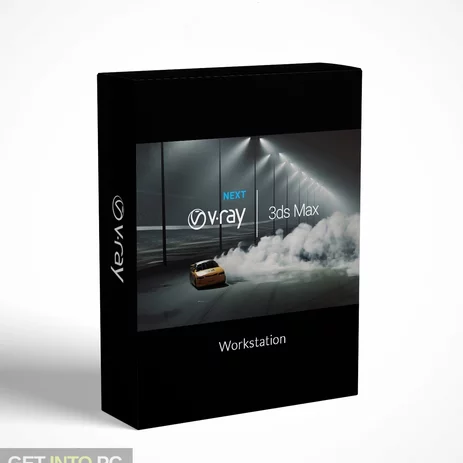V-Ray Next for 3ds Max
V-Ray Next for 3ds Max is the render engine that makes it possible to create images and animations photorealistic. The architects and interior designers maximize this because 3ds Max produces high results in an extremely easy way whereas V-Ray simply integrates with these. The newest version of V-Ray brings smarter workflows combined with faster speeds with AI-driven tools to bring it to power one of the most powerful render solutions in the market.
Overview
V-Ray Next is rendering technology developed by Chaos Group, which can be said as a giant leap into the future. V-Ray Next for 3ds Max is designed with the idea of simplifying the process of rendering, making the human need in 3ds Max reduce the time required yet with a good output. V-Ray Next is flexible and is suitable for most sectors, including architecture and product design, game development, and film production.

Developments:
V-Ray has developed steadily since the initial release as rendering requirements dictate the professional level of rendering needs. V-Ray Next introduces some AI-driven tools, adaptive learning algorithms, and optimized hardware use for better rendering performances and preserving higher-quality renderings, for which V-Ray has become known.
Key Features:
- AI Denoiser: real-time noise elimination from renders means that one quickly browses over a render to spot any rendering anomalies.
- Adaptive Dome Light Automatically adjusts lighting to maximize the output of image quality while minimizing render times. GPU Acceleration Rendering with fast NVIDIA RTX acceleration, providing fast, GPU-accelerated rendering.
- Scene Intelligence: The intelligent features provided are: Auto exposure and White balance, which ensures precision in lighting and color. Materials Advanced shaders along with improved textures create lifelike materials.
- Powerful Memory Management Complex scenes using millions of polygons without bottlenecks at performance levels.
- Distributed Rendering To render scenes in multiple machines within a smaller timeframe.
- High-Quality Volumetric Effects: Model fog, smoke, and other atmospheric effects accurately.
- Real-Time Rendering: Preview effects in real-time with the interactive V-Ray Frame Buffer (VFB).
- Large Material Library: Get access to a massive library of pre-made materials, lights, and assets that have sped up your workflow.
Pros
- Rendering of High Quality with photorealism
- Speed further increased with AI and Graphics Processing Unit
- Easy to integrate with 3ds Max
- The software was sturdy enough to control complex scenes.
- Industrial Standard File Formats are thoroughly supported
Cons
- The steep learning curve for newcomers
- V-Ray Next for 3ds Max requires extremely powerful hardware to run it to its full potential.
- Premium pricing might deter small studios or freelancers
System Requirement
- OS: Windows 10/11 (64-bit)
- Processor: Intel or AMD 64-bit processor with SSE4.2 support
- RAM: 8 GB
- Storage: 4 GB available
- GPU: Supports NVIDIA CUDA 11.0 or later; minimum 2 GB VRAM
Recommended Requirement
- OS: Windows 11 (64-bit)
- Processor: Intel Core i7 or AMD Ryzen 7 equivalent
- RAM: 32 GB or more
- Storage: SSD with 8 GB free space
- GPU: NVIDIA RTX GPU with 8 GB or more VRAM
Download V-Ray Next for 3ds Max
- Go to Chaos Group.
- Login or make an account
- Navigate to V-Ray for the 3ds Max page.
- Select one of the options (monthly, annual, or perpetual license) to be activated.
- Once activated, proceed with downloading your chosen installer.
- Download the software and activate it with a license code. Associate V-Ray with the installation of 3ds Max and start rendering.
Conclusion:
In effect, V-Ray Next for 3ds Max renders like no game done; it is absolutely fast, offering the best efficiency and quality unmatched in the same trade. Its intuitive features, made even more practical by seamless compatibility with 3ds Max software, make it an absolute necessity at the workplace levels for architects and designers, professionals in visual effect fields, creating complex animations of photorealism from a single output. V-Ray Next for 3ds Max Free Download Now
